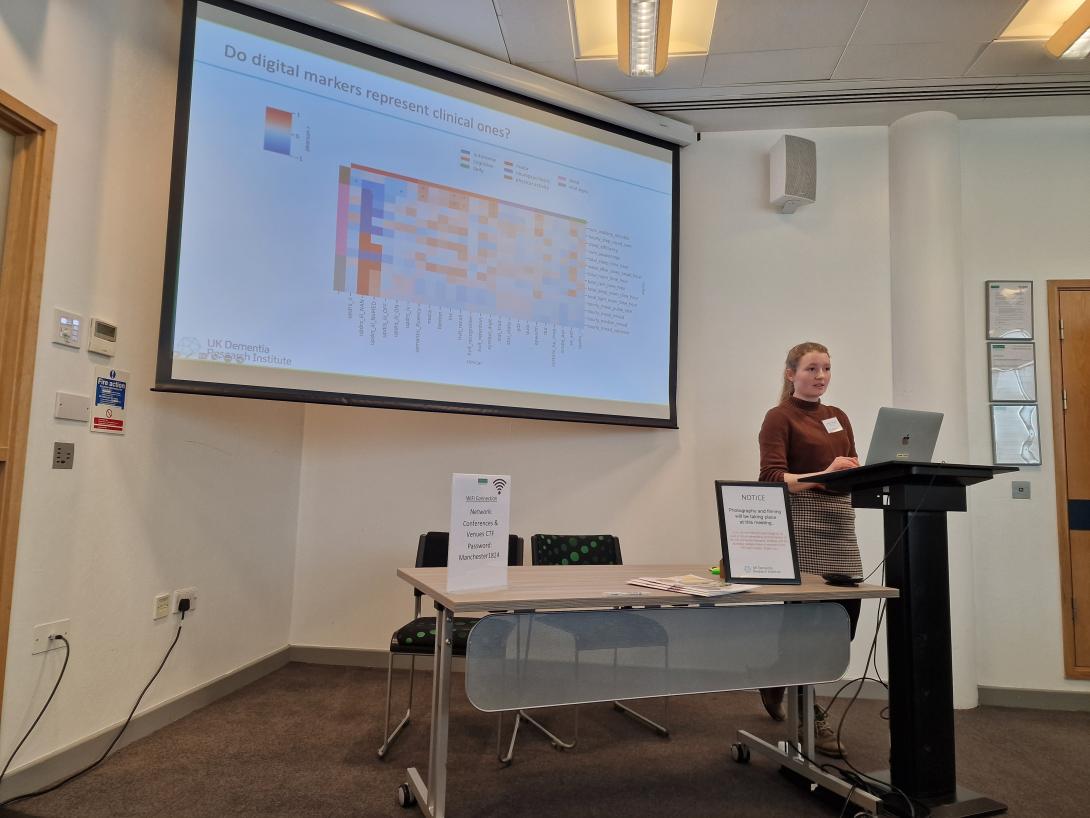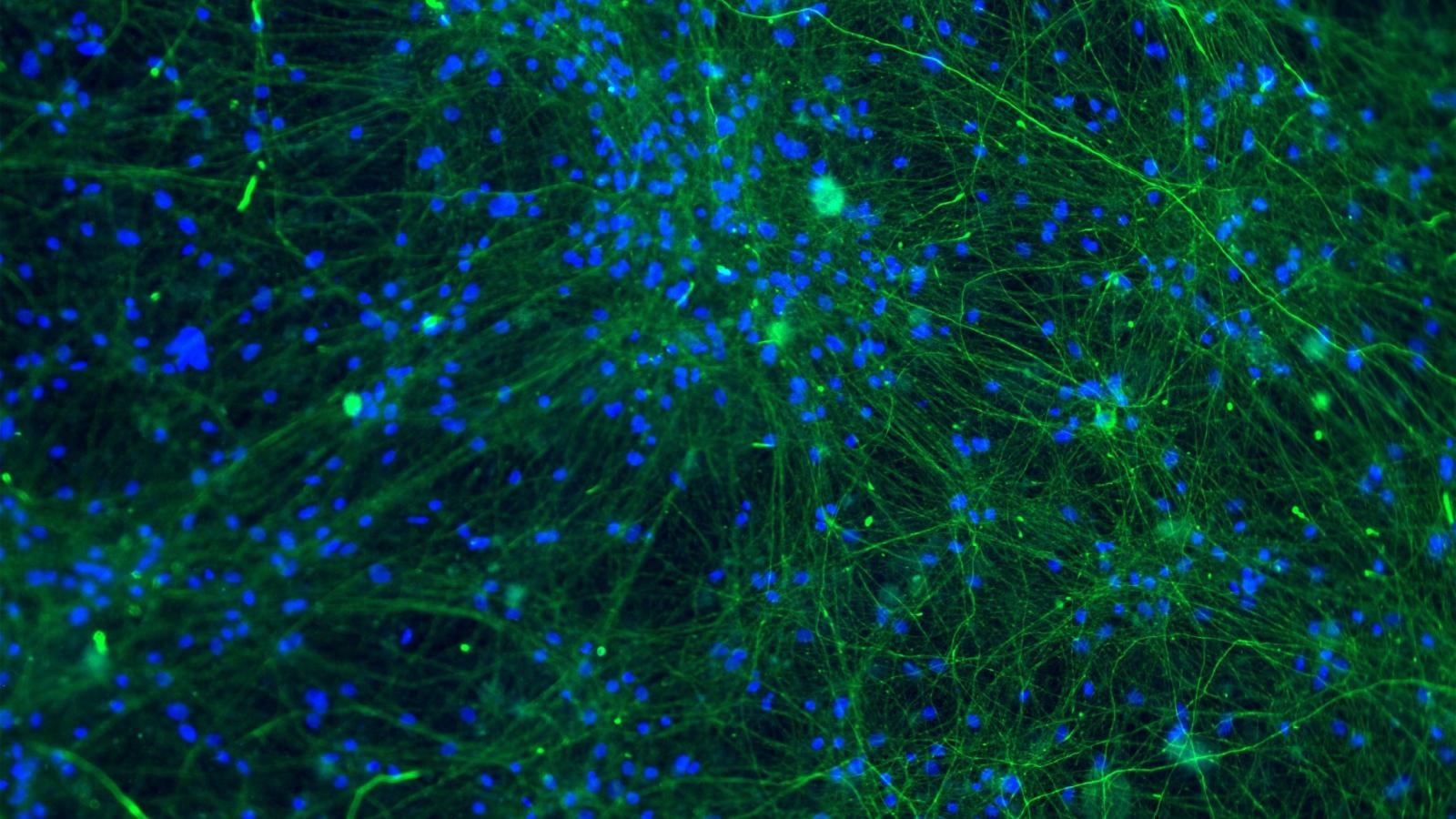Researchers across the UK DRI are looking into the causes, effects and impact of Parkinson’s disease, the fastest growing neurological condition that currently affects 145,000 people in the UK. As part of a major programme of work across the Institute, we recently brought together a group of early career researchers to discuss their work, share ideas and facilitate new collaborations at a lively meeting.
Ahead of World Parkinson’s Day, we spoke to three ECRs who attended the meeting. They told us why they’re excited about their work, what’s happening in the wider Parkinson’s research field, and recounted their highlights from the meeting.
Ann-Kathrin Schalkamp is a PhD student in Dr Cynthia Sandor’s lab (UK DRI at Cardiff), Dr Christina Toomey is a postdoctoral research associate in Prof Sonia Gandhi’s lab (UCL), and Áine Heffernan is a PhD Student in Dr Bhuvaneish Selvaraj and Prof Siddharthan Chandran’s labs (UKDRI at Edinburgh).
Tell us about your research - what are you working on?
Ann-Kathrin: My work aims to improve the detection and management of Parkinson's disease. I’m developing screening tools that can help identify early signs of Parkinson’s in the general population and explore how the disease progresses using large biobanks and deeply phenotyped cohorts.
Christina: I study the disease-related changes in post-mortem brains that have neurodegenerative conditions and pair this with different types of large-scale data to learn about how disease processes may be reflected within the pathology that we see under the microscope.
Áine: I study mutations in a gene called LRRK2, which are some of the most common genetic causes of familial Parkinson’s. Previous studies have demonstrated that the function of astrocytes, a special type of brain cell, is disrupted in Parkinson’s and in my research, I’m trying to understand how LRRK2 mutations are contributing to this effect.
people in the UK are affected by Parkinson's

presenting her work at the meeting
What aspect of your work are you most excited about?
Ann-Kathrin: I am excited about the potential for digital biomarkers to revolutionise Parkinson’s diagnosis. We have some really exciting data being gathered by smartwatches, showing technology may be able to detect Parkinson’s long before a clinical diagnosis is made. I am eager to explore more ways in which digital sensors can improve the care and quality of life for those with Parkinson's.
Christina: At the moment I’m working on a number of spatial transcriptomic and spatial proteomic methods for use with human post-mortem brain tissue. It is exciting to try cutting-edge techniques and discover what we can achieve.
Áine: Most LRRK2 biochemical research has been carried out in cell lines which are not physiologically relevant for Parkinson’s. Therefore, I’m really looking forward to investigating the molecular and functional consequences of LRRK2 mutations in a human stem cell model that better reflects Parkinson’s physiology.
What developments in the Parkinson’s field are you most excited about?
Ann-Kathrin: The advancements in data sharing and the creation of large biobanks. Even more exciting is that these biobanks now begin to integrate digital health records and sensors data, allowing us to uncover new biomarkers that can be collected passively and at low cost in the general population.
Christina: I am most excited about the new advancements that are investigating RNA binding proteins and how they are altered in Parkinson’s. They have been linked to other neurodegenerative diseases but now the Parkinson’s field is expanding into this area.
Áine: Parkinson’s is characterized by a loss of dopaminergic neurons in an area of the brain called the substantia nigra. This year in Sweden, the first patient received a transplant to replace the cells that are lost, as part of the STEM-PD clinical trial; the first such trial in Europe. This is a huge development for stem cell research and could transform the way we treat the disease in future.
What did you find most useful and enjoyable about the recent meeting?
Ann-Kathrin: I particularly enjoyed and valued gaining fresh perspectives on Parkinson’s disease from a range of angles. As a researcher who mainly works with clinical data, hearing about the latest research from experts in genetics and proteomics was invaluable. This interdisciplinary exchange helped me broaden my understanding of Parkinson’s.
Christina: These meetings are really valuable to keep up with new exciting data and discuss the intricacies of the methods. It fosters relationships for potential collaborations – for example, I made a few new connections at the meeting, which is brilliant. Most importantly, it creates a peer-to-peer network for the next generation of researchers.
Áine: These ECR meetings provide an excellent opportunity to receive valuable feedback, expand your knowledge and meet other people in the field. I find that engaging with others about my work gives me a new perspective, as people ask questions that make me think about my project in a different light.
To find out more about this programme and other key themes, read our feature with Research Theme Project Manager, Sarmi Sri.
Article published: 11 April 2023
Banner image: Neurons with SMI312, an axonal marker. Credit: Áine Heffernan
